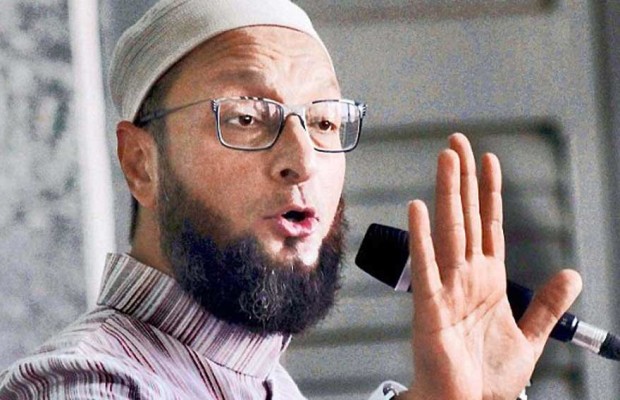RECLAIMING BHARAT MATA

Bharat Mata—Mother India—is the subject of (un)intellectual engagement these days. There are people who refuse to chant “Bharat Mata ki Jai” and there are those who want to compel every Indian to chant the slogan in praise of our great nation. These days nationalism is in the process of donning new clothes tailored by “experts” in making uniforms – not only for their bodies, but also for their thoughts, vision, and culture. The decibel levels are so high that even well-meaning political outfits have been trapped into joining the chorus.
The raising of slogans like “Bharat Mata ki Jai”, “Hindustan Zindabad”, “Vande Mataram”, or “Jai Hind” (all in praise of the nation) has existed naturally in our country for decades. It is because of the short-sightedness of the Mohan Bhagwats of today that minions like Asaduddin Owaisi are making te news. I find it pathetic when most nationalist and patriotic socio-political forces also feel the need to support resolutions against individuals who refuse to say “Bharat Mata ki Jai” but have no hesitation in shouting “Hindustan Zindabad” at the top of their lungs. Does it even matter if somebody prefers “Maa Tujhe Salam” over “Vande Mataram”?
No Owaisi could dare raise a finger at the impartial commitment to the secular values of Indira Gandhi when she inaugurated the temple of Bharat Mata on the banks of Ganga at Haridwar in May 1983. The eight-storey temple still stands at Saptsarovar and the founder of this great structure, Swami Satyamitranand Giri, was awarded Padma Bhushan by Narendra Modi’s government last year. And, could any Owaisi question the secular credentials of Mahatma Gandhi when, in 1936, he inaugurated Bharat Mata Mandir in Banaras which was built by Babu Shiv Prasad Gupt? Why, then, 80 years after Gandhi’s initiative, we find it necessary to jump in the boat sailed by fanatical right wingers?
The personification of India—Bharat Mata—is not down to Keshav Baliram Hedgewar (born in 1889), the first chief of Rashtriya Swayam Sevak Sangh (RSS) or Madhav Sadashiv Golwalkar (born in 1906), the second chief of the Hindu nationalist organisation. The concept of Bharat Mata formed an integral part of India’s Independence movement, in which, the RSS had a negative role. From various accounts, the origin of Bharat Mata can be traced back to a play by Bengali nationalist Kiran Chandra Bandyopadhyay that was first performed in 1873. The RSS came into exisitence 52 years later. Set during the famine of Bengal in 1770, it dramatises the story of a housewife and later her husband who have to flee into the jungle and fall in with a group of rebels. A priest then takes them into a temple to show them Mother India. Emboldened by this, they lead a rebellion which culminates in the defeat of the British.
The concept of worshiping Prithvi (the Earth), has long been part of various civilisations. Equating the Indian nation with mother goddess first arose in Bengal. It is a region where Shakti (the goddess) worship dominates and goddesses such as Kali, Durga, and Chandi are popular. The first powerful expression of the motherland as a goddess came with what is now a seminal work in Bengali literature and political philosophy. The novel Ananda Math, by Bankim Chandra Chattopadhyay, contained Vande Mataram.
During the Swadeshi movement and the agitation to annul the 1905 partition of Bengal, the idea of India and Bengal as a mother goddess was used widely. Vande Mataram was the popular anthem of the time. Rabindranath Tagore’s nephew Abanindranath Tagore created what was probably the first pictorial representation of Bharat Mata in 1905 and it was widely reproduced and used in the Swadeshi movement.
The Mother India of Abanindranath Tagore was never meant to be appropriated by the likes of Vinayak Damodar Sawarkar, who began presenting the image on the basis of their ideology. Hindutva has reclaimed and greatly magnified Bankim Chandra’s idea of Bharat Mata. The RSS conducts its every event with blazing banners of Bharat Mata holding a saffron flag and not the Indian tricolour. It is this Bharat Mata which creates confusion in some minds, as against the Bharat Mata of Mahatma Gandhi, Nehru, or Indira Gandhi.
Mother India is not the only example of female personifications of nations. There are other various examples such as Mexico’s Virgin of Guadalupe and Catalonia’s Virgin of Montserrat. These holy icons imagined the nation visually and emotionally helping forge a sense of unity. There should be no reason for the theocratic image of Bharat Mata to not inspire the same feelings of unity and social harmony in India. But when it comes to worshipping a Sawarkarised Bharat Mata, problems occur.
Inheritors of Gandhian values must not feel shy in giving liberty to the people for the expression of “Bharat Mata ki Jai” through the words they chose to use. It was Rabindranath Tagore, and he was not an RSS man, who wrote to the then Congress president Subhash Chandra Bose in 1937, arguing that Vande Mataram could not be India’s national anthem, given its religious nature. He said that the novel Anand Math is a work of literature, and so the song is appropriate in that context. But, Parliament is a place of union for all religious groups, and there the song cannot be appropriate. And, it was the Congress which took Tagore’s views on board and expunged the explicitly religious stanzas of Vande Mataram before giving it official status of “National Song”.
Tears come from the heart and not from the brain. I find Bharat Mata trying to hide her tears these days. To wipe these tears let us throw the Owaisis and Bhagwats into the dustbin of history.









You must be logged in to post a comment Login